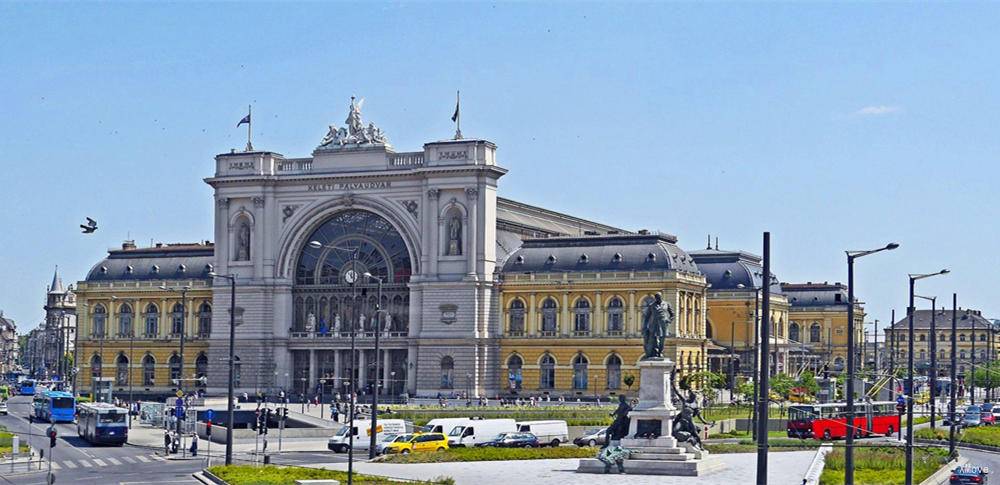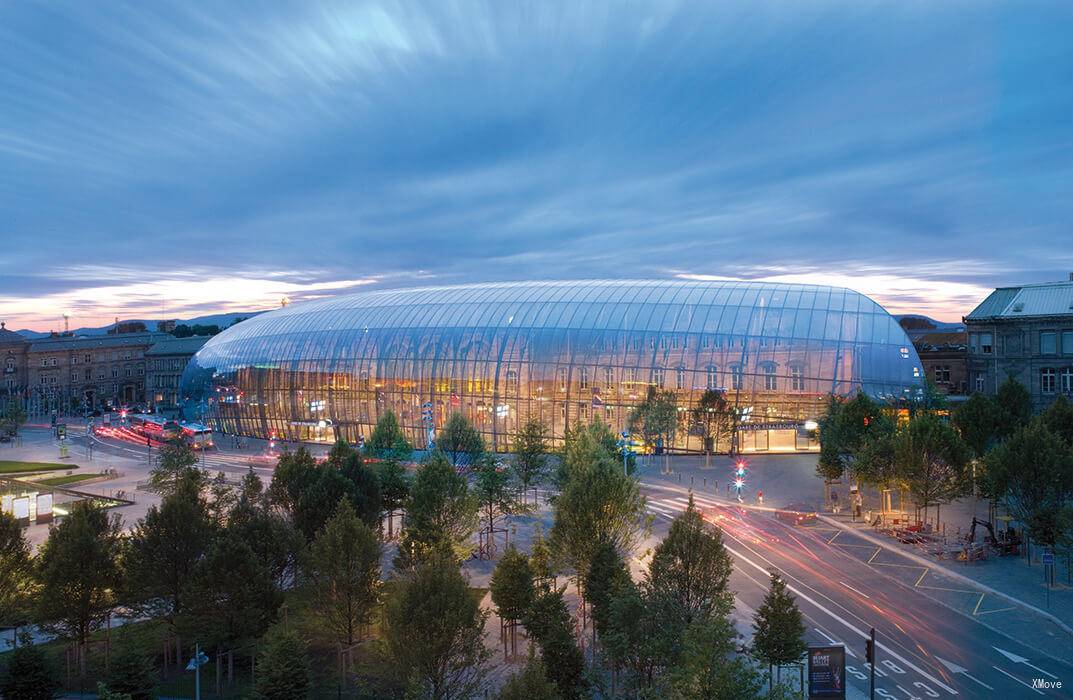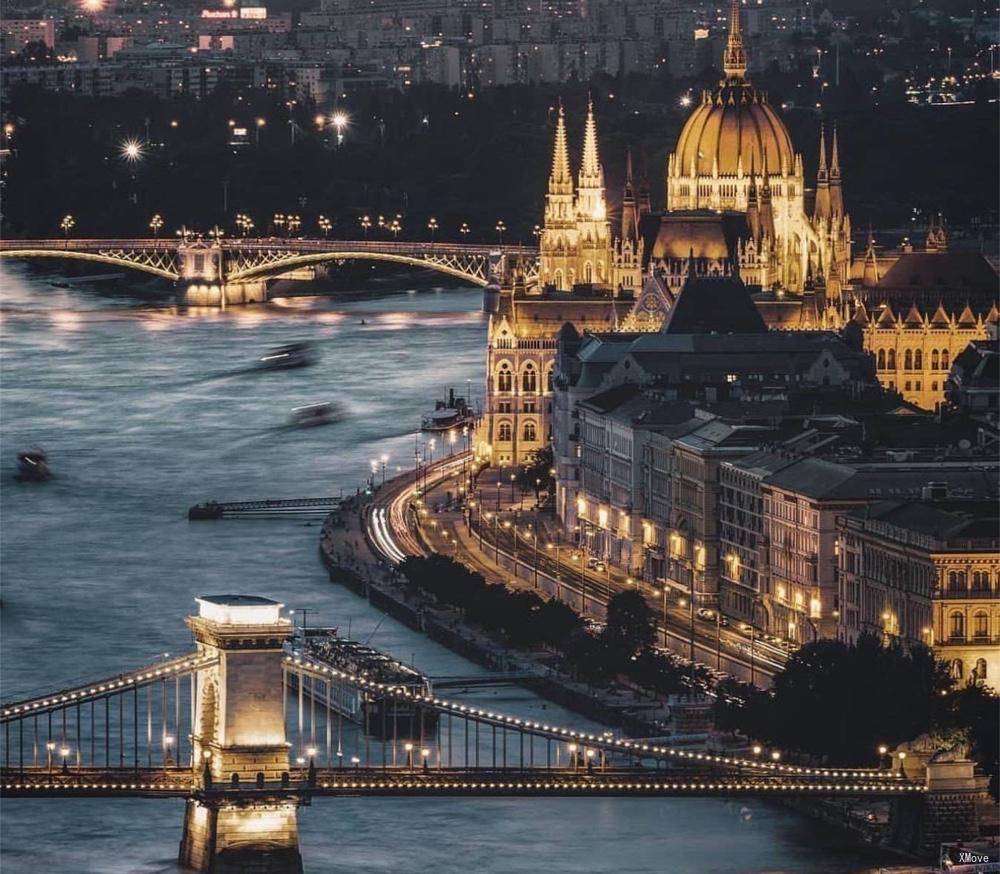Budapest Central to Strasbourg: Trains, Buses, Fares, Today's Connections, Routes, Duration, Types of Trains, Station Guides, Tips, Journey
Hungary Train Tickets
Scan QR code, download G2Rail App to see Budapest Central's more live update, station guide, plan and photos



Train schedule Budapest Central(Budapest Keleti Pályaudva) to Strasbourg
Popular train routes departing from Budapest Central(Budapest Keleti Pályaudva)
* Florence(Firenze)
* Split
* Hildesheim Central(Hildesheim Hbf)
* Vienna Airport(Wien Flughafen)
* Belgrade(Beograd)
* Parndorf Bhf Central(Parndorf Bhf (Main))
* Ljubljana
Popular train routes arriving in Budapest Central(Budapest Keleti Pályaudva)
* Linz Central(Linz Hbf)
* Zürich Hb
* Goeppingen(Göppingen)
* Belgrade(Beograd)
* Zagreb
* Moenchengladbach Hbf(Mönchengladbach Hbf)
* Rosenheim
Popular train routes departing from Strasbourg
* Mulhouse Ville
* St Raphael Valescure(St Raphaël Valescure)
* Belfort Montbéliard Tgv
* Chalon Sur Saône
* Agde
* Regensburg Central(Regensburg Hbf)
* Luebeck Hbf(Lübeck Hbf)
Popular train routes arriving in Strasbourg
* Warsaw(Warszawa)
* Belfort Montbéliard Tgv
* Mâcon Ville
* Wroclaw Central Station(Wroclaw Glowny)
* Brussels Airport Zaventem(Bruxelles National Aéroport(Zaventem))
* Paris East(Paris Gare De L’est)
* Montpellier Saint Roch
* Delft
* Graz Central(Graz Hbf)
* Ludwigshafen(Rh) Central(Ludwigshafen(Rh)Hbf)
* Mannheim Central(Mannheim Hbf)
* Paris Roissy Charles De Gaulle Airport Cdg(Aéroport Paris Roissy Charles De Gaulle Cdg)
* Moenchengladbach Hbf(Mönchengladbach Hbf)
* Paris Lyon Station(Paris Gare De Lyon)

Budapest Central
The train connects Budapest with all the central and eastern countries of Europe. Unless otherwise indicated, all trains will arrive at Budapest Keleti pályaudva, so if you arrive in Budapest by train, you should get off at East Railway Station. All international trains depart from the Keleti station, and domestic trains to Miskolc, Eger, Győr and Szombathely also depart from here.
You can choose to take the M2 line and get off at the Keleti pályaudvar stop. The starting point of Metro Line 4, the subway M2 and M4 meet here.
Budapest Central - Station Guide | Departures and Arrivals | Popular RoutesStrasbourg
Strasbourg has three passages that run under the platform and connect them to the main hall.
The central passage in the middle of the platform is accessible via stairs and escalators.
Access to the north and south passages via stairs and elevator/elevator.
If you arrive by train and are happy to use the stairs, just use the first stairs you see.
However, if you have luggage, etc., you must find a lift or escalator.
Similarly, when you enter Strasbourg Station, there are three routes to take the train.
If you walk from the city centre and use the main main entrance, you will see the passage leading to the train ahead.
This passage has stairs and escalators, and the train (platform/track) that leads to the train.
If you want/need to use the elevator to get into the train, they are available, but you will need to use either of the two alternative routes to the train.
You will find them at the end of the channel, which extend left and right from the main hall.
Strasbourg - Station Guide | Departures and Arrivals | Popular Routes

Budapest (, Hungarian pronunciation: [ˈbudɒpɛʃt]) is the capital and the most populous city of Hungary, and the tenth-largest city in the European Union by population within city limits. The city has an estimated population of 1,752,286 over a land area of about 525 square kilometres (203 square miles). Budapest is both a city and county, and forms the centre of the Budapest metropolitan area, which has an area of 7,626 square kilometres (2,944 square miles) and a population of 3,303,786, comprising 33% of the population of Hungary.The history of Budapest began when an early Celtic settlement transformed into the Roman town of Aquincum, the capital of Lower Pannonia. The Hungarians arrived in the territory in the late 9th century. The area was pillaged by the Mongols in 1241. Buda, the settlements on the west bank of the river, became one of the centres of Renaissance humanist culture by the 15th century. The Battle of Mohács, in 1526, was followed by nearly 150 years of Ottoman rule. After the reconquest of Buda in 1686, the region entered a new age of prosperity. Pest-Buda became a global city with the unification of Buda, Óbuda, and Pest on 17 November 1873, with the name 'Budapest' given to the new capital. Budapest also became the co-capital of the Austro-Hungarian Empire, a great power that dissolved in 1918, following World War I. The city was the focal point of the Hungarian Revolution of 1848, the Battle of Budapest in 1945, and the Hungarian Revolution of 1956.Budapest is an Alpha − global city with strengths in commerce, finance, media, art, fashion, research, technology, education, and entertainment. It is Hungary's financial centre and was ranked as the second fastest-developing urban economy in Europe. Budapest is the headquarters of the European Institute of Innovation and Technology, the European Police College and the first foreign office of the China Investment Promotion Agency. Over 40 colleges and universities are located in Budapest, including the Eötvös Loránd University, the Semmelweis University and the Budapest University of Technology and Economics. Opened in 1896, the city's subway system, the Budapest Metro, serves 1.27 million, while the Budapest Tram Network serves 1.08 million passengers daily.Among Budapest's important museums and cultural institutions is the Museum of Fine Arts. Further famous cultural institutions are the Hungarian National Museum, House of Terror, Franz Liszt Academy of Music, Hungarian State Opera House and National Széchényi Library. The central area of the city along the Danube River is classified as a UNESCO World Heritage Site and has several notable monuments, including the Hungarian Parliament, Buda Castle, Fisherman's Bastion, Gresham Palace, Széchenyi Chain Bridge, Matthias Church and the Liberty Statue. Other famous landmarks include Andrássy Avenue, St. Stephen's Basilica, Heroes' Square, the Great Market Hall, the Nyugati Railway Station built by the Eiffel Company of Paris in 1877 and the second-oldest metro line in the world, the Millennium Underground Railway. The city also has around 80 geothermal springs, the largest thermal water cave system, second largest synagogue, and third largest Parliament building in the world. Budapest attracts 4.4 million international tourists per year, making it a popular destination in Europe.
Budapest - Guide, Attractions, Tours, Sightseeings | Train from/to Budapest | Popular RoutesStrasbourg (UK: , US: , French: [stʁazbuʁ, stʁasbuʁ] ; Bas Rhin Alsatian: Strossburi [ˈʃd̥ʁɔːsb̥uʁi] , Haut Rhin Alsatian: Strossburig [ˈʃd̥ʁɔːsb̥uʁiɡ̊] ; German: Straßburg [ˈʃtʁaːsbʊɐ̯k] ) is the capital and largest city of the Grand Est region of France and is the official seat of the European Parliament. Located at the border with Germany in the historic region of Alsace, it is the capital of the Bas-Rhin department. In 2016, the city proper had 279,284 inhabitants and both the Eurométropole de Strasbourg (Greater Strasbourg) and the Arrondissement of Strasbourg had 491,409 inhabitants. Strasbourg's metropolitan area had a population of 785,839 in 2015 (not counting the section across the border in Germany), making it the ninth-largest metro area in France and home to 13% of the Grand Est region's inhabitants. The transnational Eurodistrict Strasbourg-Ortenau had a population of 915,000 inhabitants in 2014.Strasbourg is one of the de facto three main capitals of the European Union (alongside Brussels and Luxembourg), as it is the seat of several European institutions, such as the Council of Europe (with its European Court of Human Rights, its European Directorate for the Quality of Medicines most commonly known in French as "Pharmacopée Européenne" its European Audiovisual Observatory), the Eurocorps, as well as the European Parliament and the European Ombudsman of the European Union. The city is also the seat of many non-European international institutions such as the Central Commission for Navigation on the Rhine and the International Institute of Human Rights. It is the second city in France in terms of international congress and symposia, after Paris. Strasbourg's historic city centre, the Grande Île (Grand Island), was classified a World Heritage Site by UNESCO in 1988, the first time such an honour was placed on an entire city centre. Strasbourg is immersed in Franco-German culture, and although violently disputed throughout history has been a cultural bridge between France and Germany for centuries, especially through the University of Strasbourg, currently the second-largest in France, and the coexistence of Catholic and Protestant culture. It is also home to the largest Islamic place of worship in France, the Strasbourg Grand Mosque.Economically, Strasbourg is an important centre of manufacturing and engineering, as well as a hub of road, rail, and river transportation. The port of Strasbourg is the second-largest on the Rhine after Duisburg in Germany, and the fourth-largest river port in France after Nantes, Rouen and Bordeaux.
Strasbourg - Guide, Attractions, Tours, Sightseeings | Train from/to Strasbourg | Popular Routes
Hungary Train Tickets
Scan QR code, download G2Rail App to see Budapest Central's more live update, station guide, plan and photos



Hot Journeys
* Moscow(Москва) -> St. Petersburg(санкт петербург)
* Lucerne(Luzern) -> Arth
* Madrid(Madrid) -> Barcelona
* Oxford -> London(London)
* Frankfurt -> Berlin(Berlin)
* Bremen(Bremen) -> Freiburg Im Breisgau
* Kyoto(京都) -> Tokyo(東京)
* London(London) -> Brussels(Bruxelles)
* Florence -> Rome(Roma)
* Seoul(서울) -> Busan(부산)
* Pisa -> Florence
* Warsaw(Warszawa) -> Krakow(Kraków)
* Manarola -> La Spezia(La Spezia)
* Milan -> Venice(Venezia)
* Munich(Müchen) -> Frankfurt
* Interlaken -> Lucerne(Luzern)
* Busan(부산) -> Seoul(서울)
* Warsaw(Warszawa) -> Berlin(Berlin)
* Cologne(Köln) -> Frankfurt Airport(Frankfurt Flughafen)
* Venice(Venezia) -> Rome(Roma)
* Milan -> Florence
* Rovaniemi(Rovaniemi) -> Helsinki(Helsinki)
* Seoul(서울) -> Jeonju Si(전주시)
* Seoul(서울) -> Gwangju Metropolitan City(광주광역시)
* Cologne(Köln) -> Frankfurt
* Rome(Roma) -> Milan
* Naples -> Florence
